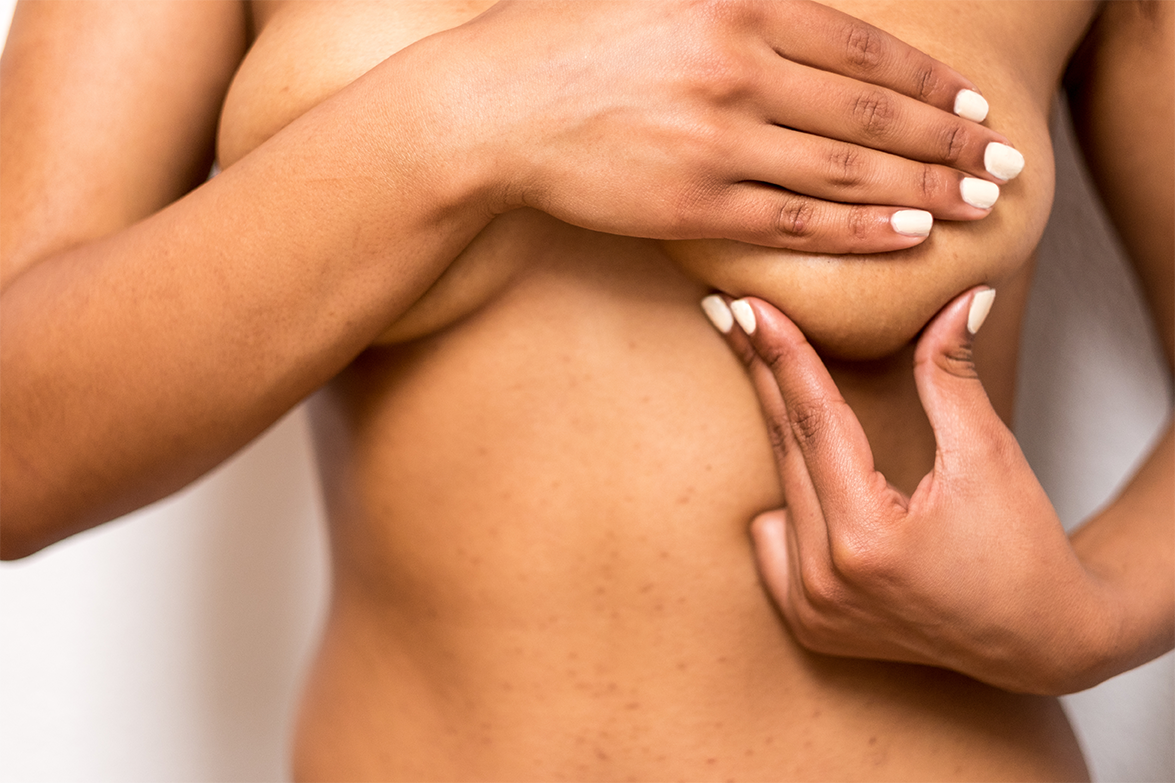
Dr Marlene Soares
"Being an oncologist may seem like the world's most depressing job. It is in fact such a privilege. Cancer and cancer treatment is a journey with many ups and sadly many downs, but travelling along this road with my patients is why I do it. They are my hero's, for their strength, love, compassion, joy and spirit." - Dr Marlene Soares.
Dr Soares graduated with her MBChB, in Pretoria, in 2003. After her internship at Johannesburg General Hospital, she completed a year of community service at Ermelo Hospital in 2005.
Following this, Dr Soares chose to specialise in radiotherapy and completed her MMED Radiation Oncology - University of Pretoria - in 2010. In the same year, she was awarded her FC RAD ONC (SA) qualification from the Colleges of Medicine South Africa.
For the next two years, Dr Soares consulted in radiation oncology at Steve Biko Academic Hospital. She joined DMO as an associate in 2013, and in 2021 became a partner within the DMO group.
Dr Soares specialises in the treatment of breast cancer and completed a certificate of competence in breast cancer from the University of Ulm, in Germany, in conjunction with the European school of oncology (ESO).
Dr Soares is the clinical director of the Pretoria based Breast Cancer Multidisciplinary Clinic and is a member of the Paediatric Radiation Oncology Society. She also specialises in gynaecological cancers, with a focus on brachytherapy treatment.
Dr Soares practices at the Groenkloof Radiation Oncology and the Mûelmed Radiation Oncology centres and is part of a team of seven Oncologists that consult at the DMO locations.
Being available to the patient is of importance to us. Our Oncologists are available daily to our patients, throughout their treatment programme, and beyond for follow up care and are rostered on call, 24 / 7 - all year.
NEWS FEED
 Apart from non-melanoma skin cancer, Breast Cancer is the most common cancer in women of all races, with a lifetime risk of 1 in 26 in South Africa, according to the 2012 National Cancer Registry (NCR). A large proportion of breast cancer patients receive adjuvant radiation therapy (RT) in either the breast conservation or the postmastectomy setting to improve locoregional recurrence rates and overall survival. Typically, patients requiring radiotherapy to the intact breast or chest wall with or without the regional nodal irradiation receive 4-6 weeks of treatment, the most common anticipated side effect is radiation dermatitis.
Apart from non-melanoma skin cancer, Breast Cancer is the most common cancer in women of all races, with a lifetime risk of 1 in 26 in South Africa, according to the 2012 National Cancer Registry (NCR). A large proportion of breast cancer patients receive adjuvant radiation therapy (RT) in either the breast conservation or the postmastectomy setting to improve locoregional recurrence rates and overall survival. Typically, patients requiring radiotherapy to the intact breast or chest wall with or without the regional nodal irradiation receive 4-6 weeks of treatment, the most common anticipated side effect is radiation dermatitis.
Pathophysiology of radiation dermatitis:
High-energy X-rays delivered during RT produce both direct and indirect ionization events that lead to damage of cellular macromolecules, most importantly in the form of double-stranded DNA breaks. Through this DNA damaging mechanism, RT affects all cellular types within the epidermis and dermis and leads to the clinical syndrome of radiation dermatitis.
Within the epidermis, radiation-induced DNA damage disrupts the normal proliferation and differentiation of basal keratinocytes. This results in the depletion if the differentiated epidermal keratinocytes and maintenance of this physical barrier is then lost.
Dermal radiation effects are much more complex. Sebaceous glands as well as hair follicles are acutely sensitive to low doses of radiation, resulting in acute skin dryness and hair loss. Microvascular injury within the dermis is responsible for both the acute as well as the chronic skin effects noted during radiotherapy. Of note “Proinflammatory cytokines and chemokines, such as interleukin (IL)-1, IL-6, IL-8, and tumor necrosis factor (TNF)-alpha, among others, have been found to play roles in immune cell activation, leukocyte transendothelial migration, and inflammatory oedema. Mast cell degranulation and histamine release also further the immune response and contribute to the clinical radiation dermatitis syndrome.” The effects of transforming growth factor (TGF)- beta on dermal fibroblasts are thought to contribute towards the late tissue fibrosis associated with radiotherapy
Presentation and Timing:
Radiation induced dermatitis develops in dose dependent, deterministic manner with predictable timing. Acute phase radiation dermatitis is defined as occurring typically within 30-90 days of radiation exposure.
Clinical symptoms of acute radiation dermatitis
| Skin reaction | Onset | Dose threshold (Gy) |
| Erythema | 7-10 days | 6-10 |
| Dry desquamation | 3-4 weeks | 20-25 |
| Moist desquamation | 4+ weeks | 30-40 |
| Ulceration | 5+ weeks | >40 |
The first clinically apparent skin change noted after breast irradiation is mild erythema. This is noted within hours of radiation exposure and presents as a faint and transient erythema. Most skin reactions are however noted within 10-14 days after initiation of radiotherapy and may progressively worsen throughout the remainder of the treatment. This skin reaction can include oedema, dryness of the skin, burning, itchiness, tenderness and hyperpigmentation. Also, common during this time is hyperpigmentation and sensitivity of the nipple areolar complex.
Dry desquamation typically occurs in doses in excess of 20Gy and clinically presents as peeling of dry skin and scaly skin which does not significantly add to patient morbidity. In contrast, wet desquamation is very painful due to the destruction and sloughing of dermal layers. It may also be associated with fluid drainage or “weeping” and is noticed after cumulative doses in excess of 30Gy. This often begins in small patches in skin folds and may progress to involve larger confluent areas typically in the axilla and the inframammary fold. Of note is that these symptoms peak in intensity approximately 1-2 weeks after the completion of radiotherapy.
Patient and treatment related risk factors:
Patient factors:
Breast cup size has consistently been shown to influence skin toxicity. A study from the Royal Marsden confirmed that patients with larger breast sizes were “five times more likely to experience acute skin reactions”. This finding was proven in many subsequent studies.
The body mass index (BMI) has also been shown to be an independent factor associated with moist desquamation. Since the worst skin reactions tend to occur in the inframammary fold and the axilla it is hypothesised that a greater self-blousing effect may the cause. The skin sparing effects of megavoltage radiation seems to be negated due to the build-up of skin on skin.
Other patient factors include:
- Degree of friction due to normal movement of the arm
- Types of clothing and texture
- Perspiration build up
Menopausal status and racial differences have been proven to be linked to radiation dermatitis risk. Post-menopausal patients as well as black patients have significantly higher rates if wet desquamation. Smoking effects have never conclusively been shown to contribute to worse acute radiation reactions.
Rare DNA mutation syndromes may also lead to severe acute radiosensitive, these include Ataxia-Telangiectasia, Nijmegen Breakage syndrome and Fanconi Anaemia
Treatment related factors:
The biggest change to the incidence of radiation dermatitis has to be the technological development of three-dimensional (3D) treatment planning. There is significant data to show that 3D planning techniques significantly decrease radiation induced skin reactions when compared to two-dimensional planning. Three dimensional techniques allow for changes in breast contour thereby reducing inherent radiation “hot-spots”.
Hypofractionation schedules are becoming increasingly more utilized. Hypofractionation implies delivery of a slightly higher daily dose of radiotherapy to an overall biologically equivalent total dose. The benefit of this dosing regimen is that it results in a shorter treatment time of 3-4 weeks instead of 5-6 weeks. Numerous prospective trials have consistently demonstrated similar long-term breast cancer outcomes using hypofractionation schedules compared to standard fractionation, without any increased toxicity. Data suggests that hypofractionation may show improved rates of dermatitis, pruritis, hyperpigmentation and breast pain in the acute setting.
Radiation dermatitis prevention: the evidence
Topical Steroids
There have been multiple prospective randomized trials that have shown that topical steroids are effective for diminishing radiation dermatitis. The “preventative effect of betamethasone on radiation dermatitis has been seen in both conventional and hypofractionated radiation settings”.
Non-steroidal Agents
Non-steroidal agents have consistently failed to show improvements in radiation dermatitis when compared prospectively. Multiple studies have shown that using Aloe Vera is ineffective in reducing acute skin reactions. A single study reported worse breast pain and dry desquamation in patients using Aloe Vera. Calendula ointment extracted from the Calendula officinalis plants has shown some promise when used a topical anti-inflammatory agent in wound healing.
Management of skin during breast radiotherapy
Skin washing:
Concerns that washing with soap and water may cause mechanical trauma have resulted in recommendations against washing in the radiation treatment fields. This theory was tested in a trial where patients were randomized to; no washing, washing with water alone or washing with soap and water. The patients who used soap and water were found to have significant reductions in “itching at the end of treatment and reduced erythema and desquamation scores 6-8 weeks following treatment”.
Current recommendations advise patients to wash skin daily with warm water and soap while avoiding scrubbing. A pH neutral soap is advised and the mildest of these is DOVE.
Deodorant and antiperspirant use:
Antiperspirants and deodorants were historically discouraged in breast cancer patients. It was felt that the metallic based formulations may increase skin reactions when interacting with radiation, as well as potentially creating a bolus like effect thereby increasing skin dose. Controlled studies have consistently found no evidence of worse skin outcomes with deodorant use when applied in standard thickness, changing the paradigm of prohibiting deodorant use during radiotherapy. Any enhanced skin reaction is related to the irritating chemical ingredients within the product itself and not “the metallic content or bolus effect”.
Barrier products for dermatitis treatment:
Cutaneous barriers are commonly used, to provide moisture and protect the skin form developing a secondary infection. Prospective comparisons have shown conflicting results and a standard treatment has yet to be identified. Numerous studies have compared hydrocolloid dressings to gentian violet and anti-microbial solution for open wounds, unfortunately no definitive answers are available.
Management of desquamation:
Dry desquamation is commonly associated with surface flaking of the stratum corneum. This is not in itself a cause for concern and the area should be well moisturized and kept clean and dry. Dry desquamation may progress to moist desquamation. It is important at this stage to document the size and location of the desquamation as well as the presence of an exudate. The recommended approach is to treat patient with saline soaks using normal saline compresses up to four times daily. The use of moisture retentive, barrier ointments after each soak is recommended.
Patients should be closely monitored for signs of infection such as fever, swelling, foul smelling purulent odour. Pain should be managed with analgesics based on the patient’s level of symptoms.
Conclusion
Despite our increasing awareness and understanding of the side effects of radiation treatment in breast cancer, radiation dermatitis continues to be among the most common side effects. In order to effectively manage patients with radiation dermatitis, one must be aware of the expected appearance and timing of symptoms, the appropriate scoring systems for properly monitoring symptom severity over time, and should follow evidence-based guidelines for treatment when
possible.
Kole A,Kole L,Moran M.S. Acute Radiation dermatitis in breast cancer patients: challenges and solutions. Breast cancer – Targets and Therapy. 2017:9 313-323.
Dr Marlene Soares
28 September 2017

